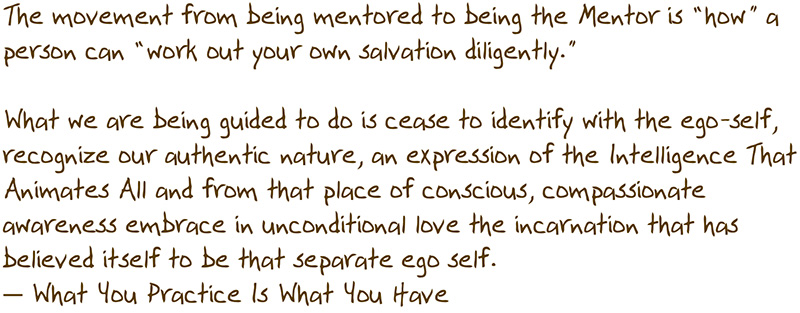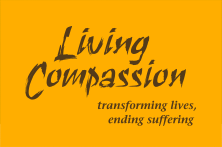We refer to practice as Zen Awareness Practice, not Zen Attention Practice, even though the most important skill we practice is learning to direct attention.
From Marion Milner:
It occurred to me that there must be two quite different ways of perceiving. Only a tiny act of will was necessary in order to pass from one to the other, yet this act seemed sufficient to change the face of the world, to make boredom and weariness blossom into immeasurable contentment.
(1) Narrow attention. – This first way of perceiving seemed to be the automatic one, the kind of attention which my mind gave to everyday affairs when it was left to itself. As far as I could see it was a ‘questing beast’, keeping its nose close down to the trail, running this way and that upon the scent, but blind to the wider surroundings. It saw items according to whether they served its purposes, saw them as a means to its own ends, not interested in them at all for their own sake. But since it saw everything in relation to something else, as a means to some end, contentment was always in the future.
2) Wide attention. – The second way of perceiving seemed to occur when the questing purposes were held in leash. Then, since one wanted nothing, there was no need to select one item to look at rather than another, so it became possible to look at the whole at once.
The instruction to pay attention, direct attention and redirect attention is a reminder to move from narrow attention to wide attention, from a limited “me” perspective to one that apprehends the whole. The focus of attention in this movement is always awareness. Because the instruction is sometimes couched in content terms—direct attention to gratitude, attend to sensations in the body, bring attention to the breath—we might not realize that we are being instructed to expand awareness. The instruction is not to think about gratitude, bodily sensations or the breath. The instruction is to be consciously aware of being grateful, physical sensations, breathing.
The moment one gives close attention to anything, even a blade of grass, it becomes a mysterious, awesome, indescribably magnificent world in itself.
— Henry Miller
There is a qualitative difference between being consciously aware and being identified with conditioned mind. As practitioners of awareness, we train to be consciously aware (attention on awareness), present to the unfolding miracle of being alive. Therefore, it is important to revisit and reclaim phrases that we’ve become accustomed to in practice. Are we really practicing attention on awareness, becoming conscious of XYZ when given instructions to pay attention?
“Drop the conversation” is the most frequent instruction in practice because all suffering is maintained in a conversation in conditioned mind. This instruction is encouragement to be aware that attention is being unconsciously manipulated.

“Dropping the conversation” is directing attention to the awareness that we are inside a process map, completely identified with the person in a conditioned narrative. Awareness of the suffering “me” serves to disidentify from that “me.” In the words of Nisargadatta Maharaj: “The very act of perceiving shows that you are not what is perceived.” When next instructed to “drop the conversation,” notice if attention shifted to awareness of the voices in conditioned mind.
“Just Notice” is a similar instruction to direct attention to awareness, to look at rather than through conditioned mind. This trains us to tune in to a witness perspective, to pure observation.
J Krishnamurti:
You observe without condemnation, without identification; therefore in that observation there is complete communion; the observer and the observed are completely in communion. This actually takes place when you are deeply, profoundly interested in something.
Communion implies no separation. A deep absorption/profound interest in something implies the absence of attention on ego-I, the process of separation. This is the principle behind assignments to “Interview unwillingness,” or “Ask an object what it loves about you.” When attention shifts to curiosity, inquiry and interest, there is no awareness of separation.
“I choose Unconditional Love” is also a call to direct attention to awareness. When the voices are loud and insistent and the content is charged, a mantra is an effective device to quiet the mind. Repetition of a mantra shifts the attention from whatever content the voices are using to capture the attention. Although it is possible to repeat any phrase and shift attention, the power of the phrase chosen increases the potency of the mantra.
“I choose Unconditional Love” encapsulates the willingness, determination and commitment to not give in to the worthy opponent (ego) doing its worst. It also embodies the understanding that ending suffering is a choice. As we repeat this phrase, we are not just cutting through the noise of conditioned mind. With each repetition, we are tuning in to the experience of the “Unborn Buddha mind” wherein, according to Bankei, “all problems are perfectly resolved.”
Sometimes the emotional charge of a thought circuit doesn’t allow for a shift in perspective. When this happens, we have a conversation with the Mentor. To be able to talk about “what is going on for me” is already an expansion of awareness, for to articulate it we have to look to our experience and become aware of our suffering. It’s a further expansion of awareness beyond ego-me to tap in to the Mentor. It brings attention to the awareness of the Intelligence That Animates All.

When we are suffering intensely, a redirect of attention is not an invitation to distract, avoid, ignore or turn away from what is going on. It is instruction to drop the suffering and get present to the situation, to turn towards it directly and to face it with conscious awareness. Attention is redirected from the conditioned conversation that causes suffering to the awareness of the Mentor’s presence and words of comfort, encouragement, sympathy, patience and understanding. In this movement, suffering ends (even if it doesn’t feel like it does) simply because attention shifts from conditioned mind (suffering) to awareness of suffering. The practice step to transcend suffering in this movement is to become aware of Awareness rather than stay in awareness of suffering.

In moments of crisis, it can be hard to find the Mentor if one has not practiced the skill of directing attention. This is one of the reasons to cultivate an R/L Practice.
Making and listening to recordings about beauty, gratitude, what’s working, what we love, what lights us up, what we cherish, what is magical, what moves us, our favorite quotes/poems/songs, our brilliant insights, what brings delight, ease, enjoyment, add your own… is a practice of directing attention to the experience represented by the content of the recording. Recording and Listening is training receptivity to something other than egocentric karmic conditioning self-hate, training to be aware of what conditioned mind ignores. As Dogen said, “enlightenment is intimacy with all beings” and the recorder is a wonderful way to get acquainted with existence!
Within you, there is a stillness and a sanctuary to which you can retreat at any time and be yourself.
— Hermann Hesse
We cannot end a review of directing attention to awareness without mentioning meditation. Sitting on the cushion and counting the breath is how we become aware of “monkey mind.” As our meditation practice deepens, so does the “ability” for attention to rest on awareness.

Meditation helps to master the skill of paying attention. It is the portal to awakening.
Ramana Maharshi:
Thoughts come and go.
Feelings come and go.
Find out what remains.
What remains when pure undisturbed consciousness slips into all consciousness? As practitioners of awareness we get to find out, if we pay attention! Gasshō
ashwini
Monthly archive
July 2024 Musings
Audio of this month's Musings:
Download (right-click to download)
Subscribe to the audio version of Musings as you would any podcast. Add this feed URL to your podcast app:
https://www.livingcompassion.org/feed/musings/podcast-feed.rss
